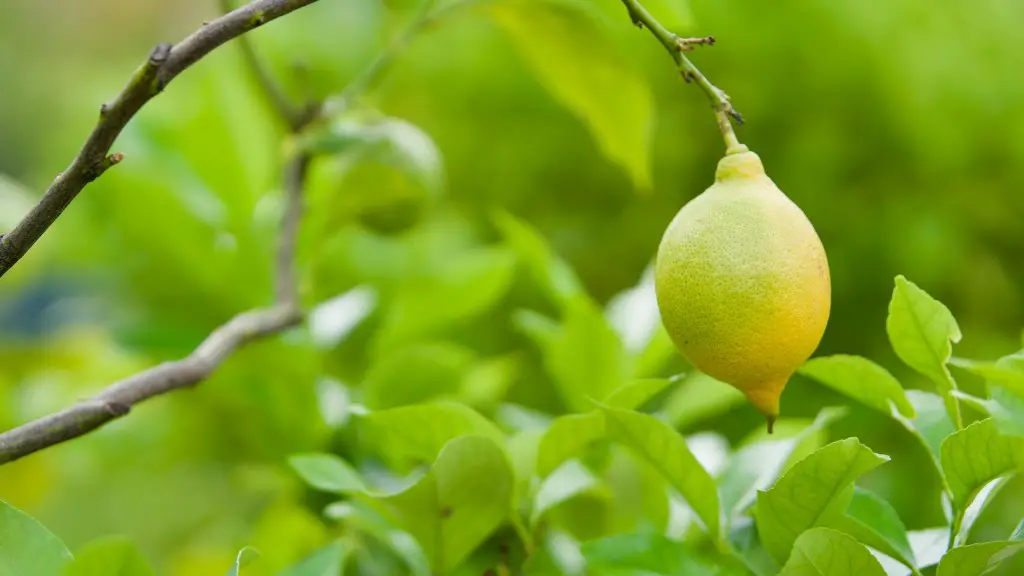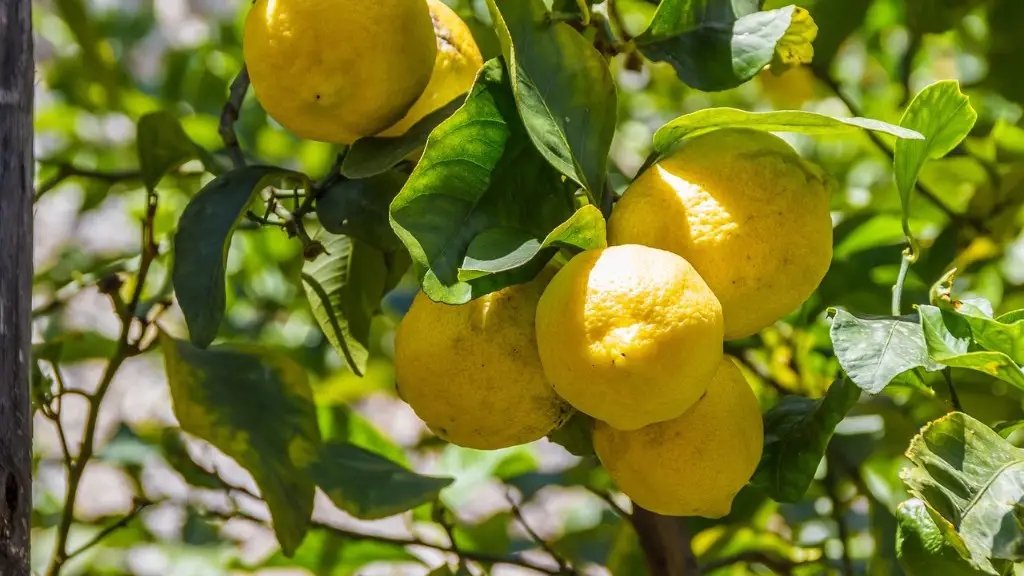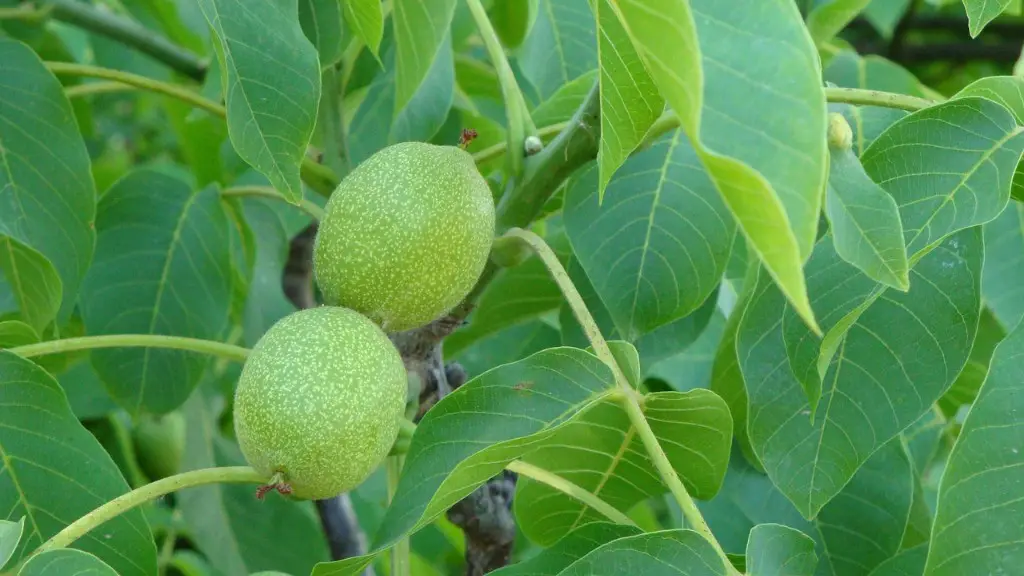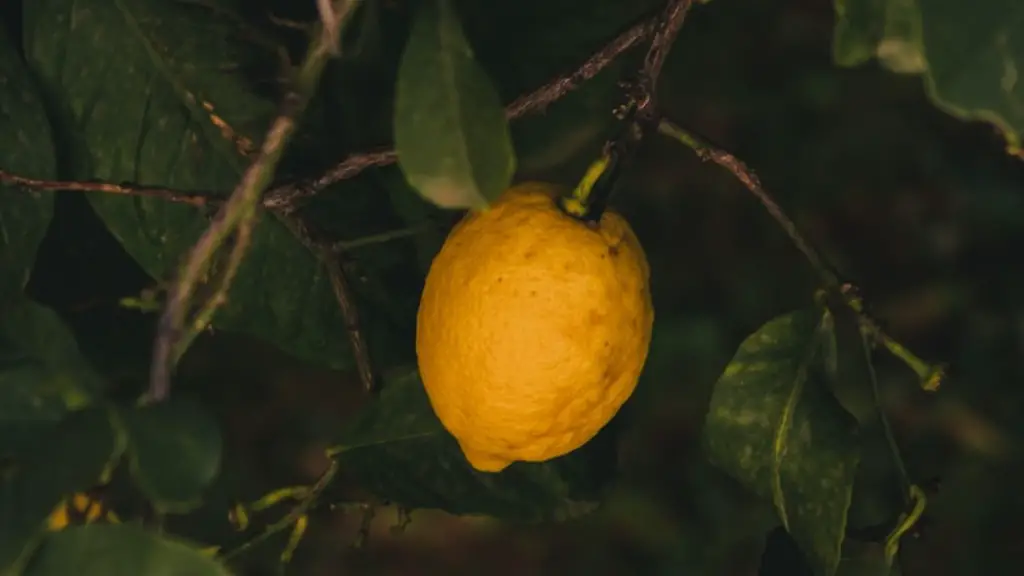When it comes to lemon trees, they must be kept in a frost-free environment in order to grow and thrive. But, how cold is too cold? For a lemon tree to survive in cold temperatures, it needs to be hardy to low temperatures – and this varies from one species to another. So, what can you do to assess if a lemon tree will be able to withstand cold weather in your area?
First, assess what temperatures your lemon tree is likely to experience in winter. Most lemon trees can tolerate temperatures as low as 20°F, but some species may need to be exposed to temperatures around the mid-20s to avoid damage. Additionally, other environmental factors can make a difference. Wind chill, for example, can reduce the temperature below what a tree is able to tolerate.
Another important factor to consider is the age of the lemon tree. A juvenile tree is more vulnerable to cold temperatures than a mature tree – while a mature tree can withstand temperatures as low as 15°F before experiencing damage, a juvenile tree really should not be exposed to temperatures below 28°F.
Finally, it is important to look at how long certain cold temperatures are expected to last in your area. If lower temperature windows are brief and spaced-out, with temperatures rising fairly rapidly during the day, the tree is liable to survive with some protection. However, if extreme cold temperatures come in for a very sustained period, especially if accompanied by wind chill, it is very likely that the tree will suffer frost damage.
Assessing Temperature Drop
To accurately assess if temperatures in your area will dip low enough to harm a lemon tree, you should invest in an outdoor thermometer – these are fairly inexpensive and easily available. Place it somewhere that is exposed to the cold and keep an eye on the temperature in early winter and late winter. If temperatures consistently stay in the higher 20s or lower, the tree may well be in danger.
Remember too that even if the temperatures stay above 20°F, the wind chill factor needs to be taken into account. This means that low temperatures need to be accompanied by low wind speeds. If winds speed is expected to be more than five miles per hour, you should take further protecting for the tree.
If you have any doubts about your lemon tree’s ability to withstand temperatures in your area, cover the tree up with something like a cloche or a lAYER OF FLEECE OVER it. This will help stop the temperature dropping below the critical level.
Methods of Protection
Covering the tree with protective material is a sensible and affordable way to protect it from frost and other harsh weather conditions. You can purchase materials specifically designed for this purpose, but an old blanket or plastic sheet can also work wonders. In addition, use stakes and string to secure it against strong winds.
Using a cold frame is another viable option. Made of either metal or plastic, these are mini-greenhouses designed to provide a warm and humid climate for seedlings, flowers and other plants. Although these are primarily used for propagating, you can use a cold frame to protect a lemon tree. Placed over the trash of the tree and fixed in the ground, it can help to raise the temperature and shield the tree from winds.
If you decide to choose a cold frame, select one that is big enough to cover the whole tree. When setting it up, orientate it so the end with the most thermal mass is facing the prevailing winds, and leave an opening for ventilation, especially when temperatures begin to rise. If your cold frame has a built-in heating system, you should use it to help the tree survive in extreme cold.
Using plenty of straw or hay around the base of the tree can also help to keep the trunk warm. This is especially useful if the tree is young or if the temperatures in your area hover around the freezing point.
Maximizing Frequency
To ensure your lemon tree will survive even if temperatures fall to the lower 20s, it is important to transport heat down from the warm air above. This can be achieved by positioning your cold frame, if used, in such a way that it will maximize the incident sunlight frequency. A thermometer placed inside the cold frame can help to monitor the temperature.
Regulating airflow is also very important accounting for the air temperature and humidity. Opening the doors of the cold frame once a day and using a fan to blow air across the interior can help to ensure the environment inside the cold frame is suitable.
Finally, water is an important resource; so, during the winter months, make sure you keep the tree sufficiently watered. This will help it to survive the cold season and help it to recover should the worst happen and temperatures fall too low.
Pruning Techniques
Along with providing protection and creating the perfect environment, pruning can also help to protect a lemon tree from heavy frost. Pruning dead wood, for instance, helps to reduce the area the tree needs to protect and makes the tree less vulnerable in the cold weather.
By carefully pruning the tree and removing any overcrowded branches, you can reduce the leaf-to-bark ratio – this is the ratio of the ecological balance between the leaves, used to capture light and the bark, used to protect the tree from the cold.
Pruning at the correct time of the year can help your lemon tree resist the winter cold better. Prune in spring, right before the tree enters its growing season. Doing this too late in the season may shock the tree, leading to weaker and less compact growth.
Tying the branches together can also help to protect the tree from frost and wind. Lemon trees typically have a strong vertical growth and may require containers, supports or stabilizing wires to strengthen their structure.
Conclusion
In conclusion, it is essential to assess what temperatures a lemon tree is likely to experience in winter before deciding if it is necessary to take additional protecting measures. While covering the tree with a cloche, lAYER OF FLEECE and/or a cold frame are all viable options for protecting it from frost, pruning and tying branches together can also help to make the tree more hardy in cold weather.




